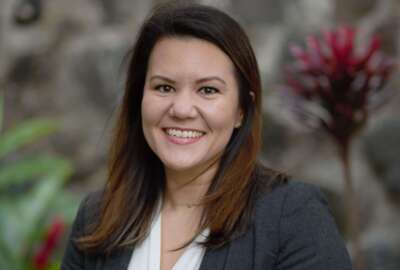As part of an expansion plan, the Defense Innovation Unit (DIU) will partner with U.S. Indo-Pacific Command (INDOPACOM) to help the organization develop and acquire cutting-edge technology.
The high-profile partnership signals a coming-of-age for the eight-year-old innovation unit that started as a facilitator pairing industry and government for technological innovation. Now, it is working directly with Defense Department partners to help them get the scientifically advanced tools they need.
INDOPACOM is setting up a new directorate called “Joint Mission Accelerator” to advance its top priority initiatives, and it is working in concert with DIU and the Office of the Undersecretary of Defense for Research and Engineering to accomplish its goals.
“We’re going to have a DIU embed; one of our team members will serve as the deputy director and chief technology officer for that effort. It is all about helping to drive and accelerate things like the joint fires network and working together with the partners across INDOPACOM,” Doug Beck, DIU director, said at the National Defense Industrial Association’s emerging technology conference Tuesday.
This “joint fires network” is one of the new capabilities DIU will help INDOPACOM develop. The network is intended to be a platform for digital sharing and decision-making, part of the Navy’s efforts to develop its Joint All-Domain Command and Control (JADC2) capabilities in connecting sensors to shooters.
“’I’ve probably spent more time with Doug [Beck] over the past couple of months to be able to really get to an understanding of how we should structure ourselves — where his team can plug in — and he has sent more than one person to Hawaii to help facilitate and drive this,” said Adm. John Aquilino, INDOPACOM’s commander.
Aquilino listed three additional technology initiatives that fall under the umbrella of Joint Mission Accelerator. Those projects include Stormbreaker, an artificial intelligence wargaming program and mission partner environment that lets users access the classified and non-classified DoD networks. There is also a Pacific Multi-Domain Training and Experimentation Capability, a system for training simulated battle scenarios.
“The directorate has been established to pull in departments focused on acceleration into the INDOPACOM critical mission needs,” Aquilino said.
Secretary of Defense Lloyd Austin made DIU a direct report to his office in an April memo at the same time Beck took over as director. That change would become law in the proposed fiscal 2024 National Defense Authorization Act (NDAA). The Senate version of the NDAA authorizes DIU’s requested budget of over $104 million.
Along with its elevated status, the DIU plans for future expansion, or what it calls “DIU 3.0.” Beck describes his organization as a “fiddler crab.”
“We’ve got this one really big claw over here that’s all about living at the intersection of national security and commercial technology, where we’ve got incredible eyewatering dual fluency talent. Then we’ve had a very small but mighty other claw over here. That’s all about our intersection with our partners in the department,” Beck said.
The idea is to grow the small claw.
In addition to INDOPACOM, the DIU has embedded staff with several other commands including U.S. European Command. Some of the partnerships involve big-ticket technology sprints like those in INDOPACOM, but some are smaller and quirkier.
A Naval Postgraduate School research project with a Coast Guard icebreaker includes DIU Chief Medical Officer Cmdr. Niels Olson. The team left Aug. 26 for a seven-week Arctic transit to study the impact of the extreme environment on crew performance. DIU supplied technology for the study, and Olson is lead medical advisor for the expedition.
“We have nearly 20 research projects on board ranging from Arctic environmental studies to tests of novel international search and rescue technologies, supported by researchers with diverse backgrounds and expertise,” Shalane Regan, the chief research engineer for the Coast Guard Research and Development Center and chief scientist for the project said in a written statement.
Copyright
© 2024 Federal News Network. All rights reserved. This website is not intended for users located within the European Economic Area.





